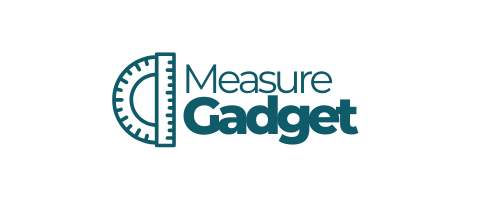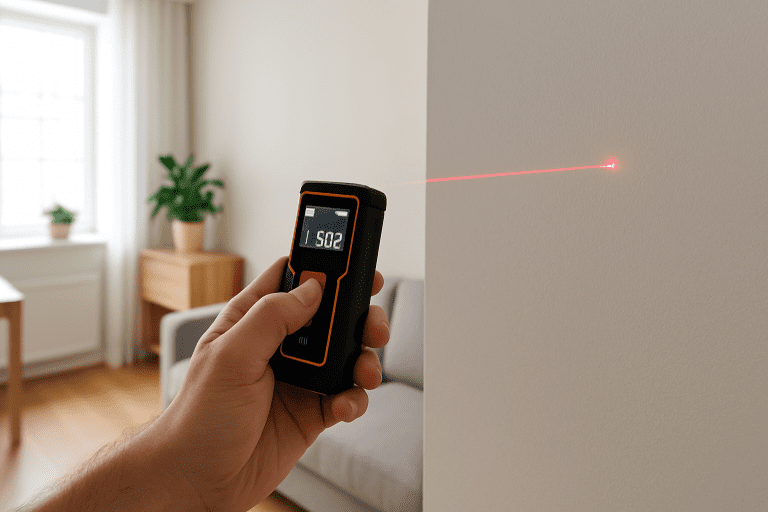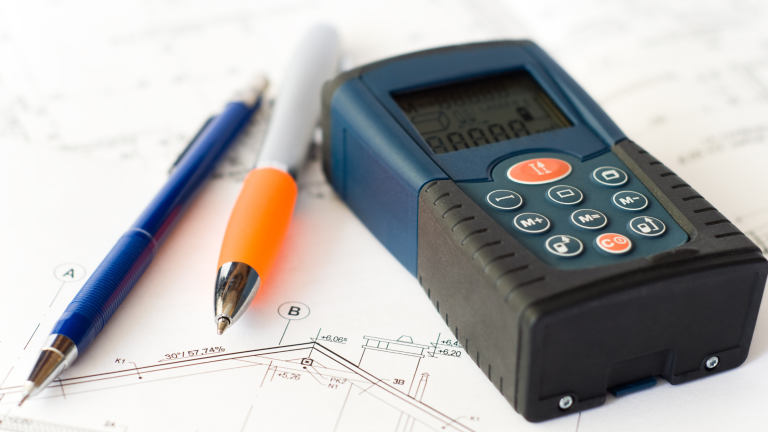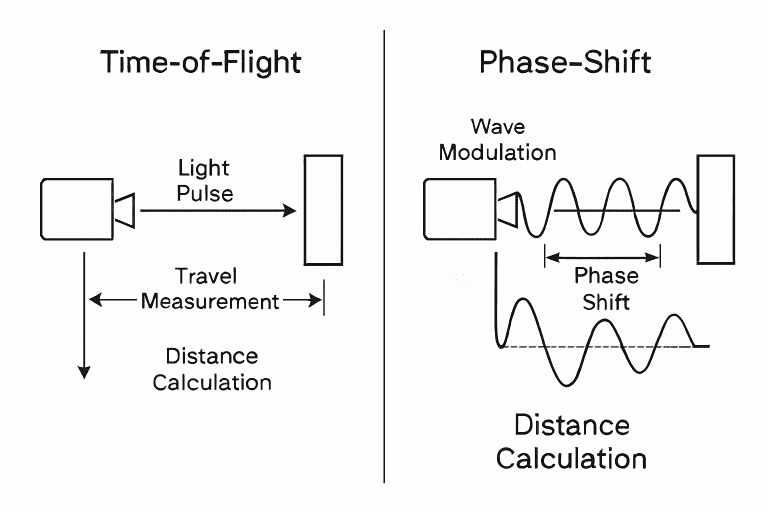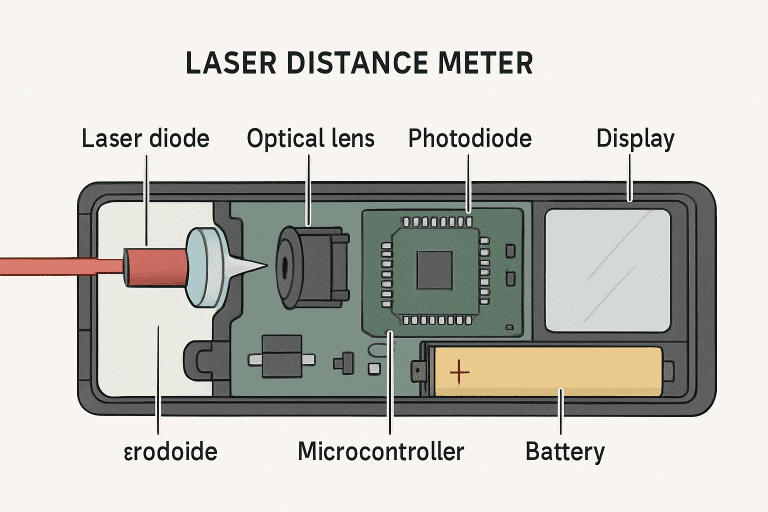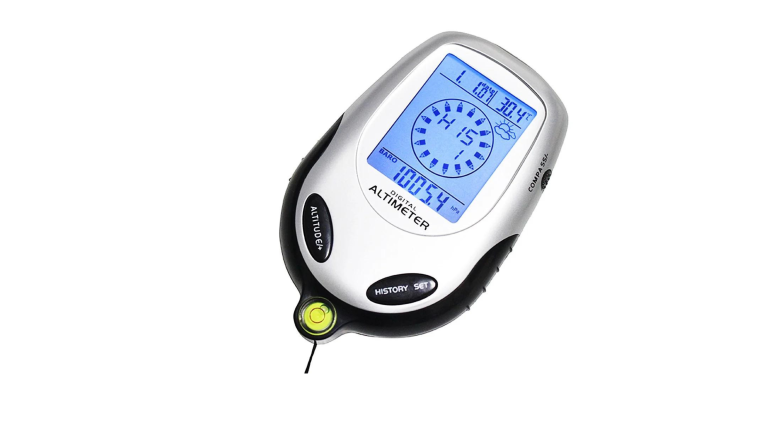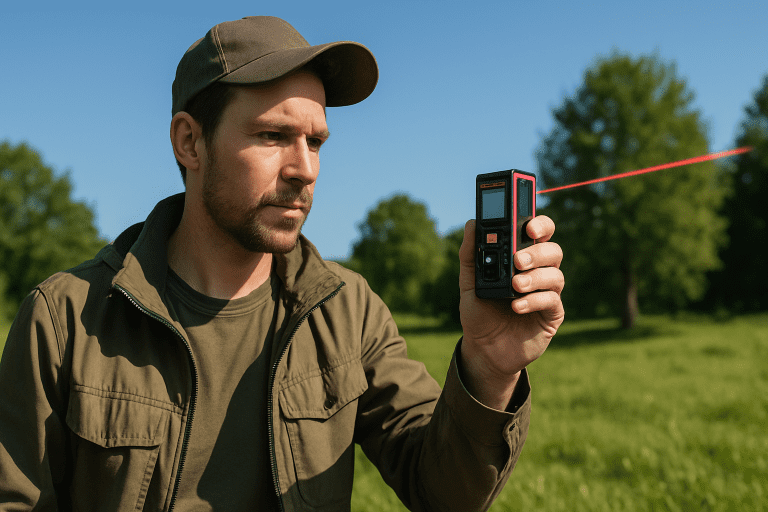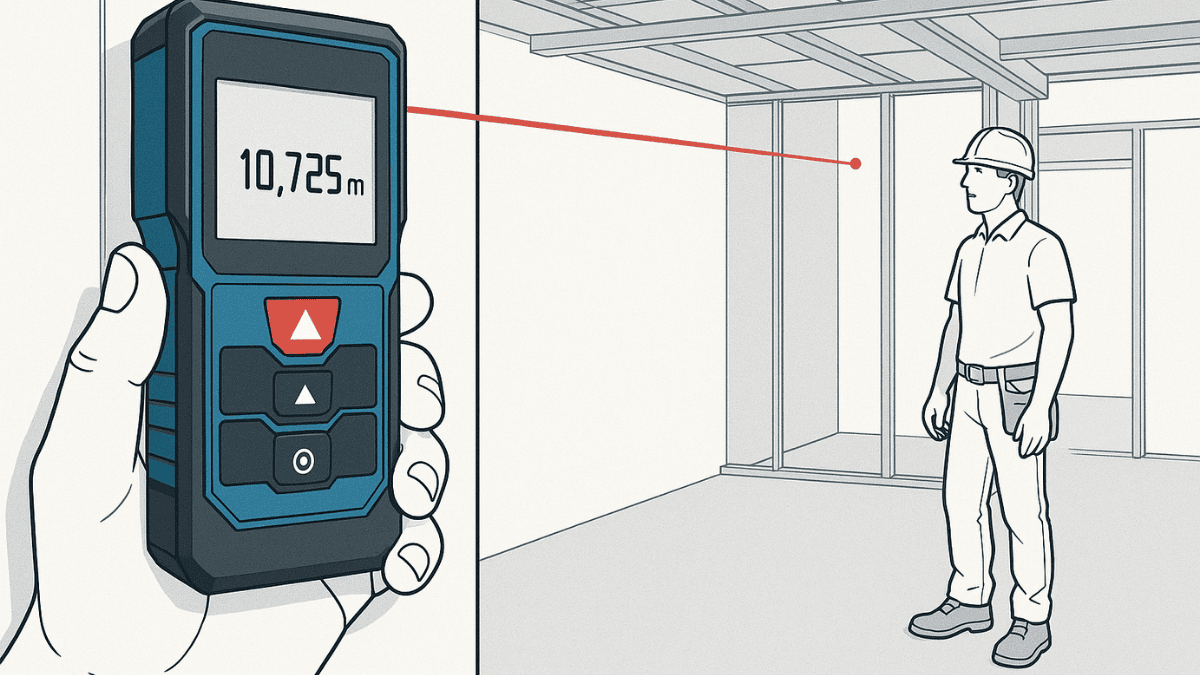
Laser measuring tools calculate distance by timing a light beam’s return, delivering millimeter-level precision without stretching a tape. On busy job sites, teams cut measuring time by up to 50% and reduce layout errors significantly.
With a simple point-and-click, results appear instantly on a transparent display. Tasks like framing walls, laying tile, or verifying ceiling height become faster and more reliable—especially in dim light or tight corners where tape measures struggle.
This guide explains how laser measures work, highlights critical features, and outlines steps to select and calibrate the right tool for contractors, surveyors, architects, and DIY homeowners.
What Is a Laser Measuring Tool and How Does It Work
Laser measuring tools send a pulse of light to a target and time how long it takes to bounce back. This method delivers millimeter-level accuracy without the stretching or sagging of a tape. Beyond simple length readings, most devices calculate area and volume, speeding up tasks like flooring layouts or ceiling checks.
The key thing to understand is the two primary measurement methods:
When you press the trigger, the tool emits a laser pulse. That pulse reflects off the surface and returns to the sensor. The internal processor converts the time difference into a distance reading displayed on a bright screen.
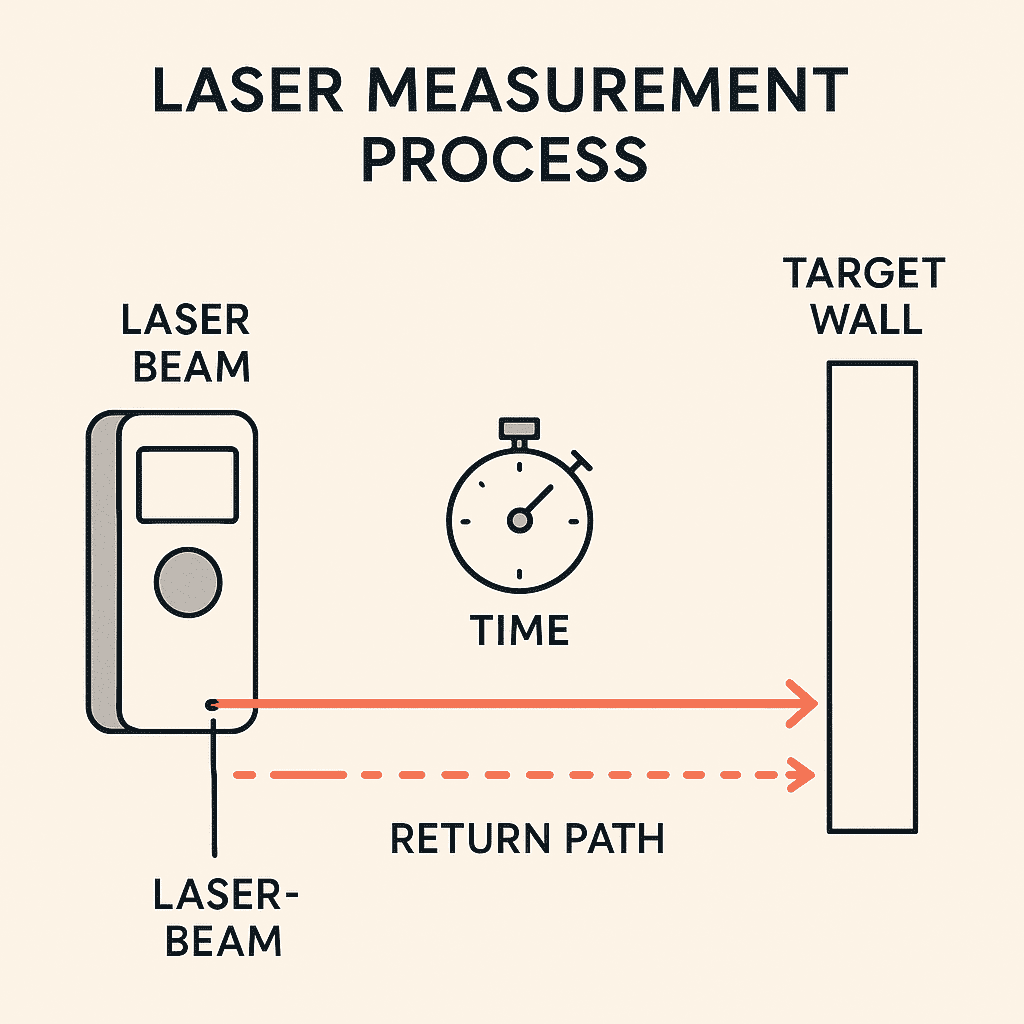
How laser measuring tools work – light pulse timing process
What makes laser measures different is their speed and precision. You’ll often see readings in less than a second, even on walls 100 meters away. Devices work on most surfaces—painted drywall, tile, wood—though very dark or shiny materials can scatter the beam. This section sets the foundation for choosing, using, and troubleshooting these tools in the sections ahead.
Time-of-Flight vs. Triangulation Technology
Time-of-Flight (TOF) and triangulation are the two primary methods laser tools use to measure distance. TOF times a laser pulse’s round trip. Triangulation tracks the angle between emitter and detector.
Each method suits different jobs:
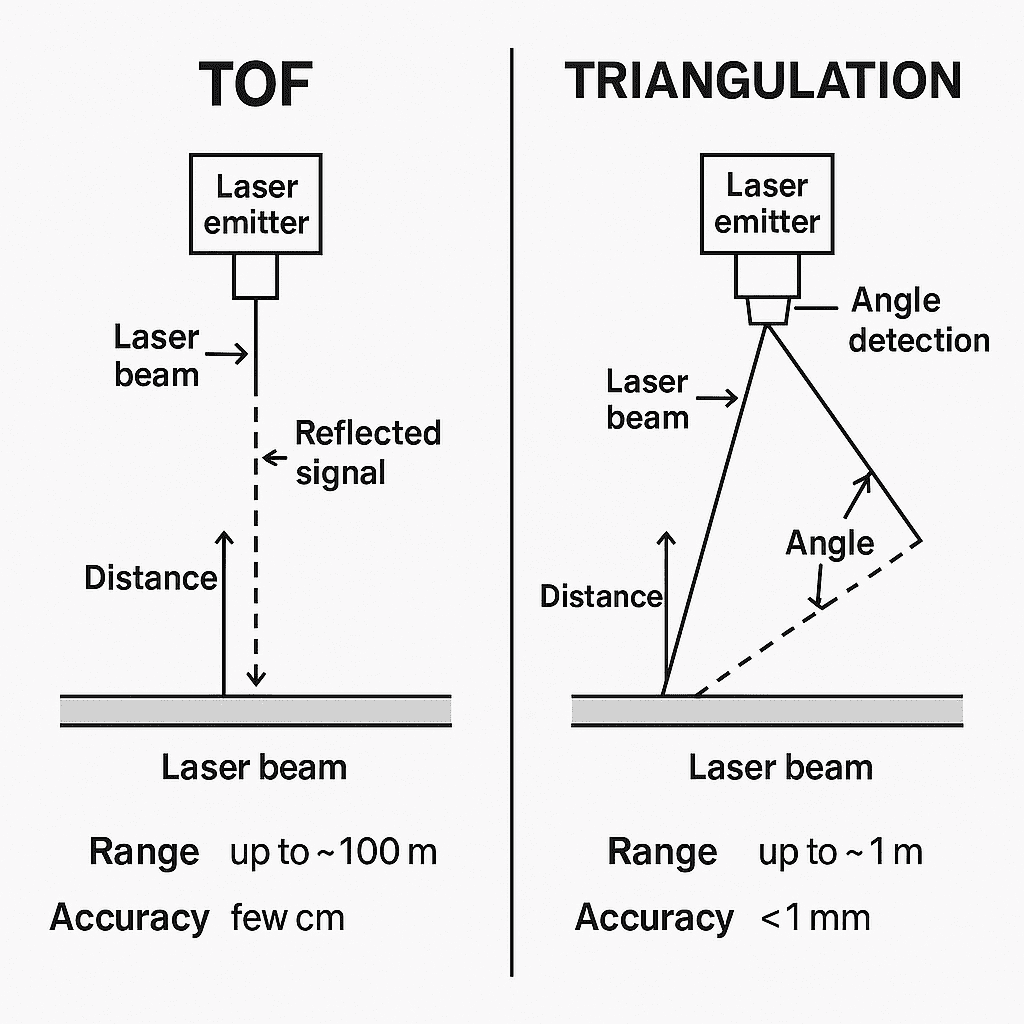
Comparison of Time-of-Flight and Triangulation laser measurement technologies
Pick TOF for land surveys or large spans. Choose triangulation for tight indoor work, such as cabinet fitting or trim installation.
Types of Laser Measuring Tools Compared
Laser measuring tools range from basic handheld models to advanced scanners and smartphone apps. Each option fits different needs and budgets.
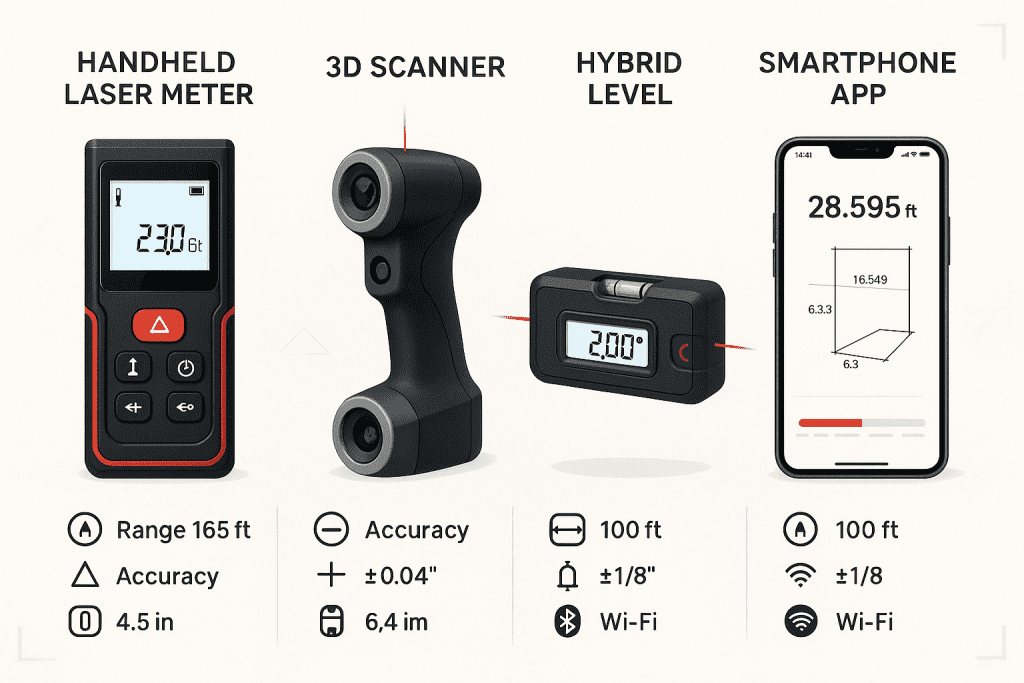
Types of laser measuring tools and their applications
Point-and-click handheld meters provide fast and reliable readings for everyday tasks. 2D/3D scanners capture detailed site data but cost more. Hybrid levels add measurement to standard leveling tools. Smartphone apps work in a pinch but lack top-end accuracy.
Essential Features and Specifications
The correct laser measure delivers specs that match your tasks. Focus on these key aspects before buying:
Match your feature needs to job demands. Contractors tackling large sites need long-range and robust build. Interior designers may prize compact size and app integration.
Real-World Use Cases and Customer Scenarios
Every job has its quirks. Here’s how laser tools solve real challenges:
These examples illustrate how various professionals and hobbyists utilize laser measuring tools. Choosing the right model for your field ensures you get the speed, accuracy, and features needed to tackle any measurement challenge.
Accuracy, Calibration, and Environmental Factors
Accurate readings depend on proper calibration and ideal conditions. A poorly calibrated tool or challenging environment can throw off results by millimeters or more.
Calibration Checklist and Timeline
Surface and Lighting Challenges
Maintain sub-millimeter accuracy by sticking to a regular calibration routine and using matte targets or stickers on tricky surfaces.
Safety Guidelines and Best Practices
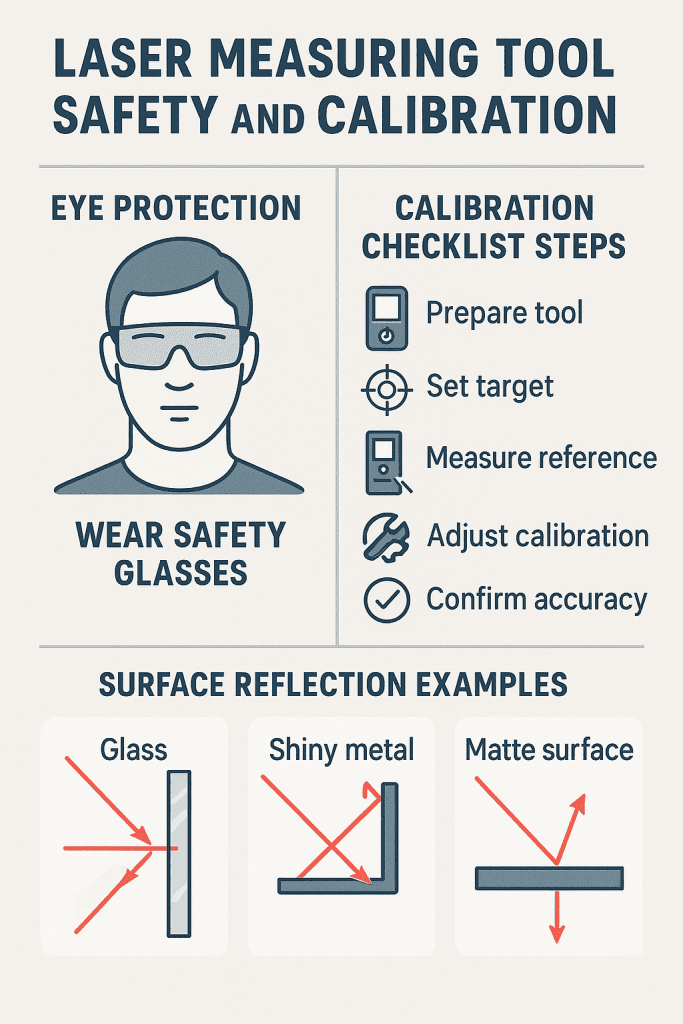
Safety guidelines and calibration best practices for laser measuring tools
Laser measuring tools are safe when used correctly. Follow these practical steps:
These simple steps help you use laser tools safely and get accurate measurements every time.
Cost Analysis and Total Cost of Ownership
Laser measures range widely in price, but the actual cost includes more than the sticker price.
|
Cost Element
|
Entry-Level ($30–$80)
|
Mid-Range ($100–$250)
|
Professional ($300–$600) |
|---|---|---|---|
|
Device Price |
$30–$80 |
$100–$250 |
$300–$600 |
|
Batteries/Charging |
$0 (AA/AAA) |
$20 (charger + cells) |
$30 (fast charger) |
|
Calibration Service |
N/A |
$50–$100 annually |
$100–$200 annually |
|
Accessories (tripod, case) |
$20–$40 |
$30–$60 |
$50–$100 |
Use this breakdown to plan your budget and avoid surprises.
Future Trends and Technological Innovations
Laser measures are evolving with more innovative features and connected workflows. Expect these advances soon:
These trends indicate faster and more seamless measurement workflows across construction, design, and surveying disciplines.
